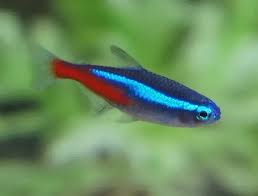
Lotus Seed Paste Mooncake, known as Bánh Nhân Sen in Vietnamese, is one of the most beloved desserts in Chinese culture. This traditional pastry, which is often enjoyed during the Mid-Autumn Festival, is a symbol of reunion and prosperity. It has a rich history, cultural significance, and an unmistakable flavor that continues to captivate generations.
This article will delve into the origins, cultural importance, ingredients, and variations of Lotus Seed Paste Mooncake. We will also provide a step-by-step guide on how to prepare this exquisite treat at home, so you can enjoy the taste of tradition no matter where you are. Whether you are celebrating the Mid-Autumn Festival or simply indulging in a sweet treat, Lotus Seed Paste Mooncakes are sure to impress.
Origins and History of Lotus Seed Paste Mooncake
Mooncakes are a quintessential part of the Mid-Autumn Festival, which is celebrated by Chinese communities worldwide. This festival, also known as the Moon Festival, is held on the 15th day of the 8th month of the lunar calendar, usually falling in September or October. The festival is a time for family reunions, appreciating the full moon, and enjoying a variety of foods, with the mooncake being the centerpiece of the celebration.
The origins of the mooncake can be traced back to ancient China, during the Tang Dynasty (618–907 AD). At that time, mooncakes were not as elaborate as the ones we know today; they were simple pastries filled with sweet red bean paste or other fillings. However, the practice of gifting mooncakes became more formalized during the Song Dynasty (960–1279 AD), when the cakes were exchanged as a symbol of good fortune and prosperity.
The lotus seed paste filling, specifically, gained popularity during the Ming Dynasty (1368–1644 AD), where it became a favored choice due to its smooth texture and subtle sweetness. The lotus seed is revered in Chinese culture for its association with purity and spiritual enlightenment, making it a fitting choice for the Mid-Autumn Festival, a time of reflection and harmony.
Over the years, the production of mooncakes has evolved, with various regional variations emerging. In southern China, especially in Cantonese cuisine, lotus seed paste mooncakes became a signature delicacy. The refined nature of the lotus seed paste filling, combined with the soft, flaky pastry crust, created a harmonious balance of flavors and textures that became synonymous with the Mid-Autumn Festival.
The Significance of Lotus Seed Paste Mooncake
In Chinese culture, mooncakes are not merely a treat; they are symbolic. The round shape of the mooncake represents the full moon, which signifies unity, completeness, and the cycle of life. As families gather together to share these cakes, they reflect on the importance of family bonds, love, and the sharing of blessings. The act of gifting mooncakes is also a way to show respect and goodwill toward others, making them an integral part of the festival’s celebrations.
The lotus seed itself holds special significance. Known for its purity and ability to grow even in the mud, the lotus is often seen as a symbol of spiritual enlightenment and resilience. In Buddhist culture, the lotus is also associated with the path to enlightenment. For this reason, lotus seed paste is considered a prestigious and auspicious filling for mooncakes, further enhancing the symbolic value of the treat.
Lotus Seed Paste Mooncake is often enjoyed with tea, which complements its delicate sweetness and smooth texture. The pairing of mooncakes with tea also highlights the importance of balance in Chinese culinary philosophy. Whether shared among family members or gifted to friends and colleagues, these mooncakes serve as a reminder of the importance of harmony, togetherness, and the celebration of life’s blessings.
The Key Ingredients of Lotus Seed Paste Mooncake
The key to making the perfect Lotus Seed Paste Mooncake lies in the quality of its ingredients. The traditional recipe consists of a delicate, slightly sweet dough and a rich, velvety lotus seed paste filling. Here are the main ingredients used:
1. Lotus Seeds
Lotus seeds are the star of this mooncake. They are typically dried and then boiled to soften them before being processed into a smooth paste. Lotus seeds are prized for their mild, nutty flavor and their soft, creamy texture, which makes them perfect for use in pastries. The seeds are also rich in nutrients, including protein, fiber, and essential vitamins.
2. Sugar
Sugar is added to the lotus seed paste to enhance its natural sweetness. While traditional recipes use rock sugar for its smooth texture, regular granulated sugar or even honey may be used as alternatives. The sweetness level can be adjusted to suit personal preferences, though the lotus seed paste is usually not overly sweet.
3. Lotus Seed Paste
Once the lotus seeds are softened and blended, they are mixed with sugar and sometimes oil to form a smooth, dense paste. This lotus seed paste is the key component of the mooncake’s filling, providing a rich and satisfying flavor that pairs perfectly with the thin, tender pastry shell.
4. Wheat Flour and Golden Syrup
The pastry dough of the mooncake is typically made from a mixture of wheat flour, golden syrup, and lye water. Golden syrup gives the dough its characteristic flavor and sheen, while the lye water helps achieve the desirable texture of the crust. The dough must be carefully prepared to ensure that it is pliable and smooth, allowing it to encase the filling without cracking.
5. Egg Wash
Before baking, the mooncakes are brushed with an egg wash, which gives them their golden-brown finish. This step adds to the aesthetic appeal of the mooncakes, making them visually striking and inviting.
How to Make Lotus Seed Paste Mooncakes at Home
Making Lotus Seed Paste Mooncakes at home can be a rewarding experience, allowing you to enjoy this traditional treat in its most authentic form. While the process requires patience and precision, the end result is well worth the effort. Below is a step-by-step guide on how to prepare Lotus Seed Paste Mooncakes at home.
Ingredients for the Mooncake Pastry:
- 200g of wheat flour
- 120g of golden syrup
- 25g of vegetable oil
- 1 tablespoon of lye water
- 1 egg (for egg wash)
Ingredients for the Lotus Seed Paste Filling:
- 200g of lotus seeds (dried)
- 100g of sugar (rock sugar or regular sugar)
- 2 tablespoons of vegetable oil
Instructions:
Step 1: Prepare the Lotus Seed Paste
- Rinse the lotus seeds thoroughly and remove any skins or impurities. Soak them in water for several hours or overnight.
- Boil the soaked lotus seeds in a pot of water until they become soft. This usually takes about 30-40 minutes.
- Drain the lotus seeds and remove any remaining skins. Then, blend the seeds into a smooth paste using a food processor or blender.
- In a saucepan, heat the lotus seed paste with sugar over medium heat. Stir constantly to prevent burning.
- Add the vegetable oil and continue stirring until the paste thickens and becomes smooth. Allow it to cool before using it as the filling.
Step 2: Prepare the Mooncake Dough
- In a large mixing bowl, combine the wheat flour, golden syrup, vegetable oil, and lye water.
- Mix the ingredients together to form a dough. Knead the dough for about 5-10 minutes until it becomes smooth and elastic.
- Divide the dough into small portions, about 30g each, and set them aside.
Step 3: Assemble the Mooncakes
- Take a portion of dough and flatten it into a circle. Place a small amount of lotus seed paste (about 40g) in the center of the dough.
- Carefully fold the dough over the paste and seal the edges. Gently shape the dough into a ball.
- Lightly flour a mooncake mold and place the dough ball inside. Press the mold down to shape the mooncake and imprint the traditional design on the surface.
- Remove the mooncake from the mold and place it on a baking tray lined with parchment paper.
Step 4: Bake the Mooncakes
- Preheat the oven to 180°C (350°F).
- Brush the mooncakes with a thin layer of egg wash to give them a golden-brown finish.
- Bake the mooncakes for 10-12 minutes, then remove them from the oven and allow them to cool.
- After cooling, the mooncakes should be left to rest for at least 12 hours before being served. This resting period allows the flavors to develop and the pastry to soften.
Conclusion
Lotus Seed Paste Mooncake is more than just a dessert; it is a cultural symbol that brings people together to celebrate the Mid-Autumn Festival and enjoy the beauty of the full moon. Its delicate, sweet filling and golden, flaky crust make it a timeless treat that has been enjoyed for centuries. Whether you choose to make these mooncakes at home or purchase them from a local bakery, they remain a cherished part of Chinese culinary heritage.
Through this article, we hope you have gained a deeper understanding of the history, significance, and preparation of Lotus Seed Paste Mooncakes. As you prepare and enjoy these delicious treats, remember that each bite represents more than just a dessert—it is a celebration of culture, family, and tradition. Happy baking and happy eating!


















